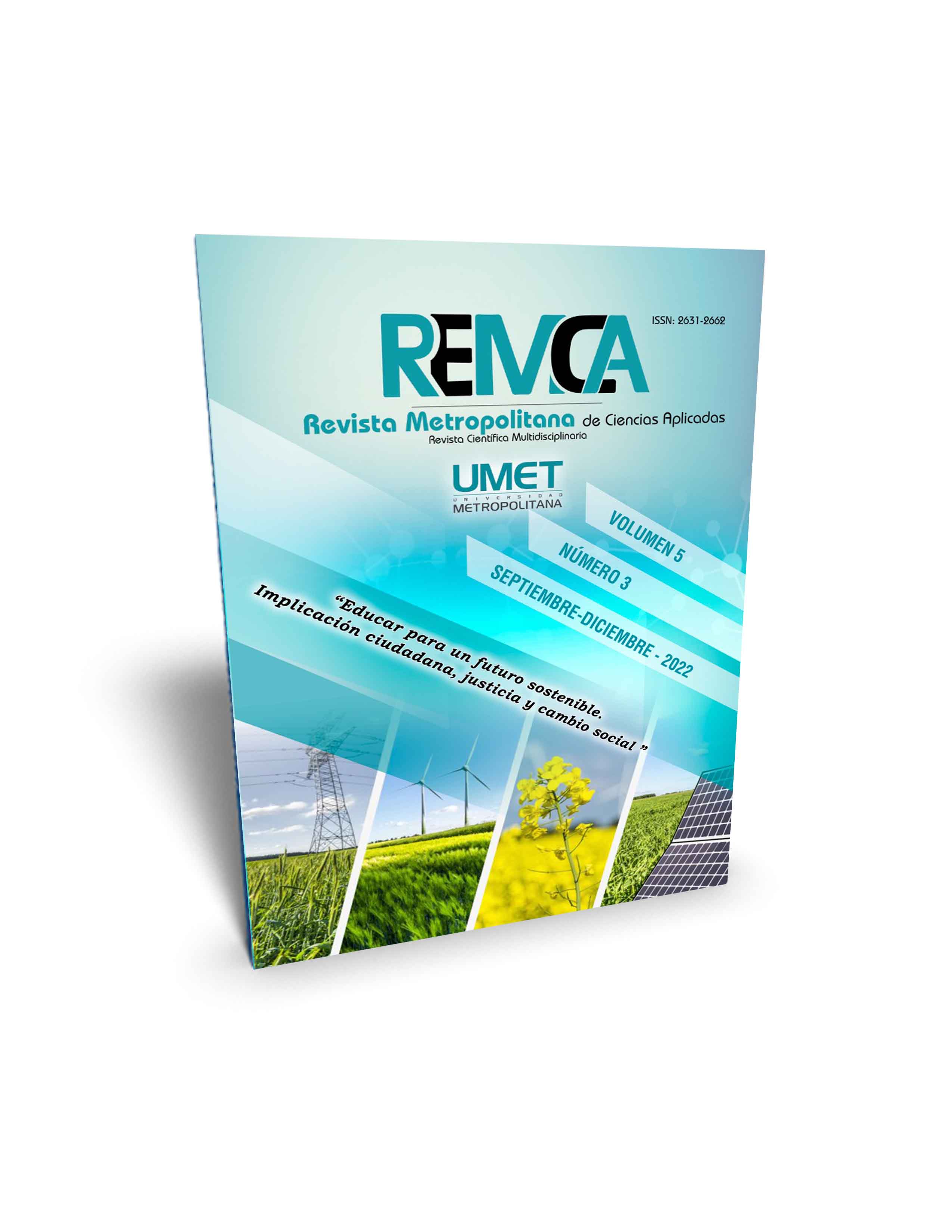Clinical epidemiological study of the main physiological phenomena of vision in gamaóptica
DOI:
https://doi.org/10.62452/ach0b192Keywords:
Visual acuity, color, stereopsis, binocular visionAbstract
Vision is not only limited to visual acuity, there are other parameters to achieve perfect vision. A descriptive, longitudinal, retrospective study was carried out in Gamaóptica, Latacunga-Ecuador, in the year 2020, to know the clinical epidemiological characteristics of the main physiological phenomena of vision. A sample of 120 patients was studied where variables such as: age, sex, occupation, visual acuity, Ishihara Test, Titmus Test and Worth's light test were explored. The qualitative variables were summarized using absolute and relative percentage frequencies. The X2 test was used at 95% certainty to compare frequencies or associate variables. In the study prevailed: the female sex with 51.7%, the age group of 15-24 years with 28.3% and the economically inactive population with 46%. 46.7% of the individuals presented visual acuity without binocular correction of distance with visual limitation, according to the Ishihara Test, 98.3% of the sample were standard people, 69.2% of the sample had normal binocular vision according to Worth's lights and 88.3% of the individuals reached a stereopsis of 40 seconds of bows. Alterations were detected, in a lower percentage, in all the tests applied to evaluate visual function: Ishihara Test (1.7%), Worth's Lights (30.8%), Titmus Test (11.7%).
Downloads
References
Albornoz, S., Castro, F., Cerna, I., Herrera, N., & Lillo, T. ( 2012). Estereopsis y test de estereopsis. https://es.slideshare.net/tomaxxx99/estereopsis-y-test-de-estereopsis
Capilla, P. (2020). Percepcion Visual Psicofíosica, mecanismos y modelos. España: Médica Panamericana, S.A.
Clemente, S., Blasco, A., Del Prado, E., Cameo, B., Soriano, D., & Pérez, J. (2018). Grados de visión binocular y como medirlos. Revista Electrónica de Portales Medicos. https://www.revista-portalesmedicos.com/revista-medica/grados-de-vision-binocular-y-como-medirlos/
Dután, E., & Espadero, R. (2016). Riesgos en la salud por el uso de celulares, computadoras y tablets en los adolescentes de la Unidad Educativa “Fray Vicente Solano” - Cuenca 2016. (Tesis de pregrado). Universidad de Cuenca.
Ecuador. Instituto Nacional de Estadística y Censo. (2010). Base de Datos-Censo de Población y Vivienda 2010-Resultado Nacional. INEC. https://www.ecuadorencifras.gob.ec/base-de-datos-censo-de-poblacion-y-vivienda-2010/
Ecuador. Instituto Nacional de Estadística y Censo. (2015). Empleo y condición de actividad en Ecuador. INEC. https://www.ecuadorencifras.gob.ec/wp-content/uploads/downloads/2015/02/Empleo-y-condici%C3%B3n-de-actividad-en-Ecuador.pdf
Feijoo, E., & Del Pozo, D. (2019). Encuesta nacional de empleo, desempleo y subempleo (ENEMUD) marzo 2019. INEC. http://www.ecuadorencifras.gob.ec: https://www.ecuadorencifras.gob.ec/documentos/web-inec/EMPLEO/2019/Marzo/Boletin_mar2019.pdf
García, J. A., & Perales, F. J., & Lázaro, M. M. (2013). Anomalías de la visión y rendimiento escolar en Educación Primaria. Un estudio piloto en la población granadina. Revista Interuniversitaria de Formación del Profesorado, 27(1), 101-119.
Gil, L. (2013). Diseño y contrucción de batería tamiz para diagnosticar anomalias de la vision binocular. (Tesis de maestría). Universidad Autónoma de Aguascalientes:
Grosvenor, T. (2004). Optometría de atención primaria. Elsevier.
Luque, M., De Fez, D., & García, M. (2019). Medida de umbrales crómaticos. Universitat de València.
Mera, P. (2016). Estudio de problemas visuales en niños de 9 a 12 años de la Unidad Educativa Jahibe. (Tesis de licenciatura). Universidad San Francisco de Quito.
Ondategui, J. (2015). Calidad óptica ocular en ojos sometidos a cirugia refractiva y afecciones patologicas. (Tesis doctoral). Universitat Politècnica de Catalunya.
Organización Mundial de la Salud. (2008). Clasificación Estadística Internacional de Enfermedades y Problemas Relacionados con la Salud. OMS. http://ais.paho.org/classifications/Chapters/pdf/Volume1.pdf
Perea, J. (2018). Fisiologia Sensorial. Capítulo 3. http://www.doctorjoseperea.com/images/libros/pdf/estrabismos/capitulo3.pdf
Puell, C. (2006). Óptica Fisiológica. Universidad Complutense de Madrid:
Stivala, A., Pezzuccuchi, J., & Angujo, M. (2014). Nociones elementales del color, propiedades, desaturación y uso simbólico. http://sedici.unlp.edu.ar/bitstream/handle/10915/77857/Documento_completo.pdf-PDFA.pdf?sequence=1&isAllowed=y
Tapia, J. (2017). Componente Práctico del Examen Complexivo previo a la obtención del Grado Académico de Licenciada en Optometría. Universidad Técnica de Babahoyo.
Downloads
Published
Issue
Section
License
Copyright (c) 2022 Solaimi Ulloa Oliva, César Augusto Terán Coba, Marlin Janeth Sarango Torres, Osmani Correa Rojas (Autor/a)

This work is licensed under a Creative Commons Attribution-NonCommercial-ShareAlike 4.0 International License.
Authors who publish in Revista Metropolitana de Ciencias Aplicadas (REMCA), agree to the following terms:
1. Copyright
Authors retain unrestricted copyright to their work. Authors grant the journal the right of first publication. To this end, they assign the journal non-exclusive exploitation rights (reproduction, distribution, public communication, and transformation). Authors may enter into additional agreements for the non-exclusive distribution of the version of the work published in the journal, provided that acknowledgment of its initial publication in this journal is given.
© The authors.
2. License
The articles are published in the journal under the Creative Commons Attribution-NonCommercial-ShareAlike 4.0 International License (CC BY-NC-SA 4.0). The terms can be found at: https://creativecommons.org/licenses/by-nc-sa/4.0/deed.en
This license allows:
- Sharing: Copying and redistributing the material in any medium or format.
- Adapting: Remixing, transforming, and building upon the material.
Under the following terms:
- Attribution: You must give appropriate credit, provide a link to the license, and indicate if any changes were made. You may do this in any reasonable manner, but not in any way that suggests the licensor endorses or sponsors your use.
- NonCommercial: You may not use the material for commercial purposes.
- ShareAlike: If you remix, transform, or build upon the material, you must distribute your creation under the same license as the original work.
There are no additional restrictions. You may not apply legal terms or technological measures that legally restrict others from doing anything the license permits.




